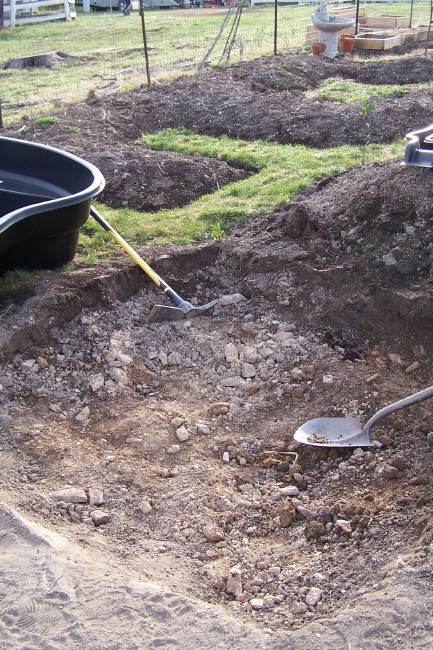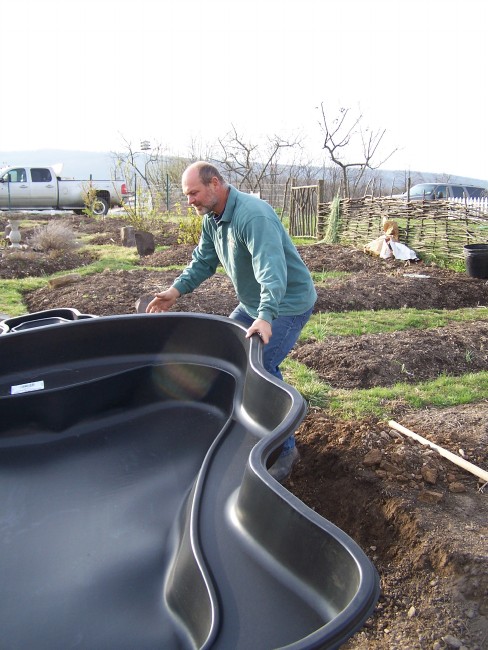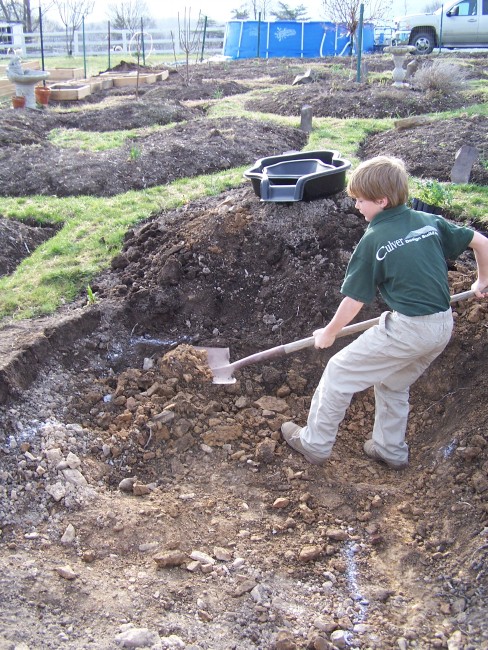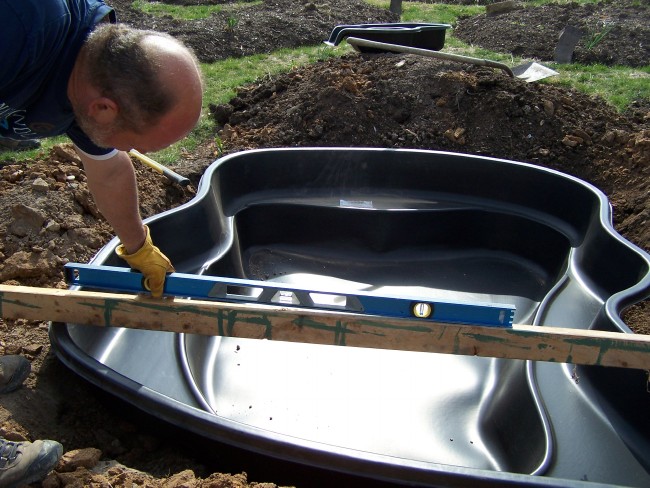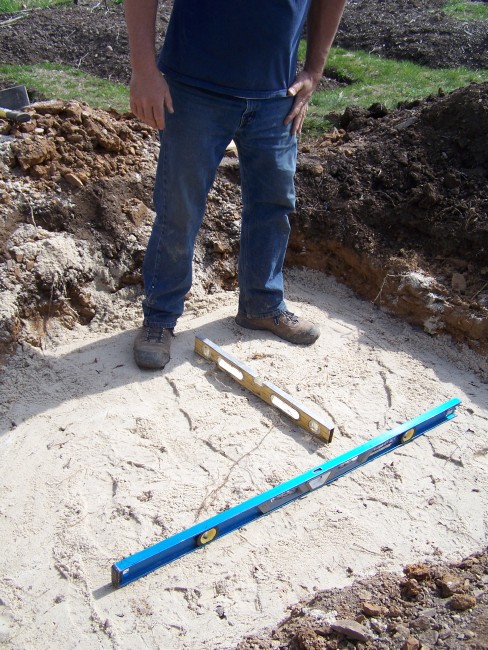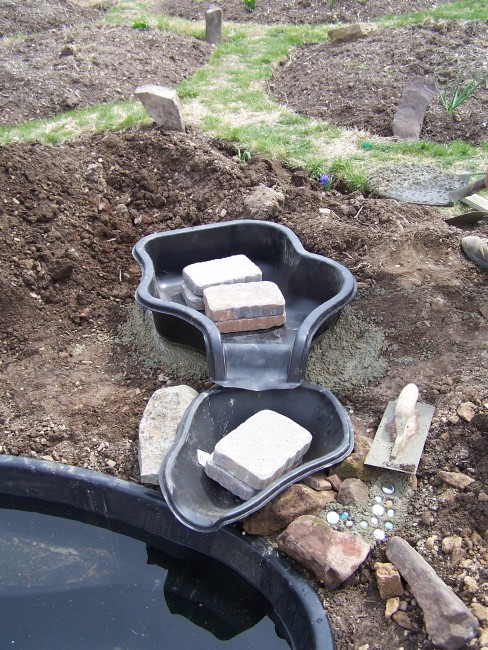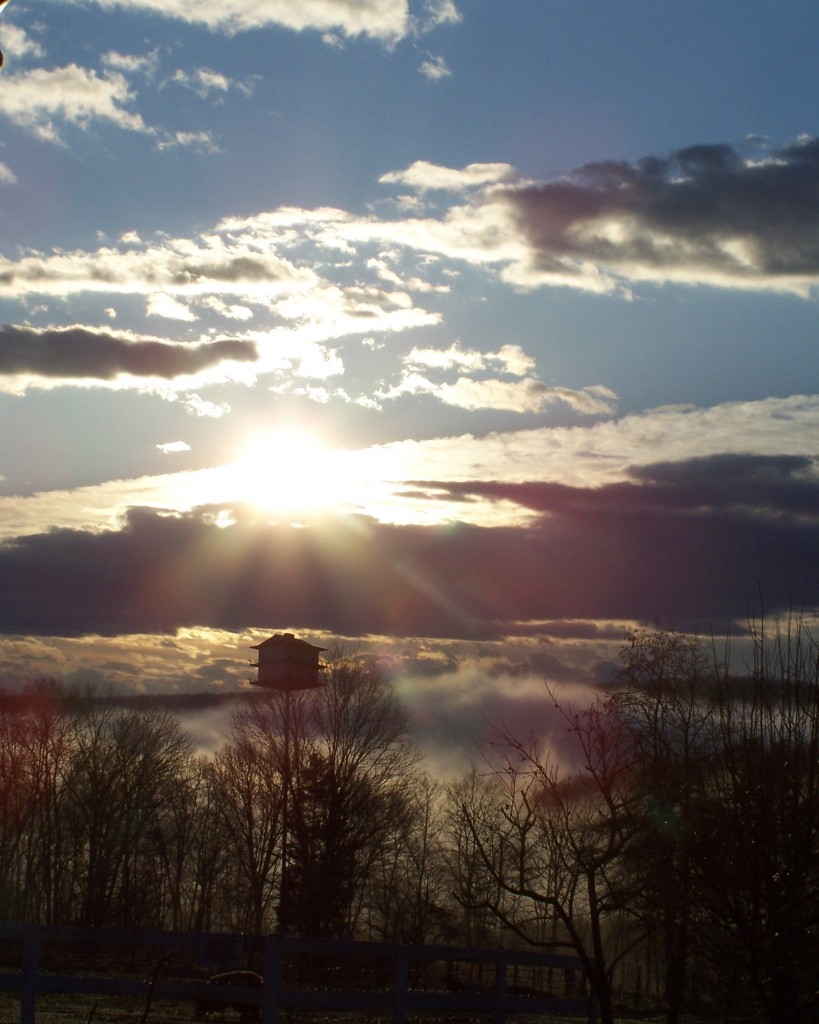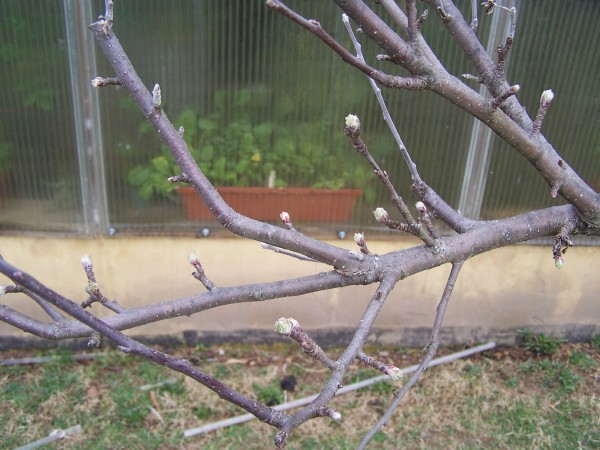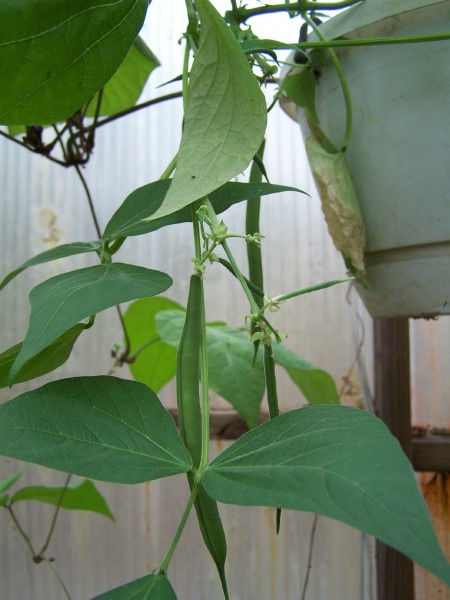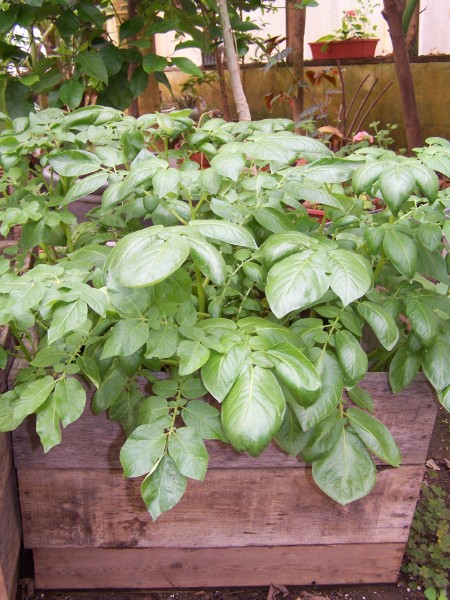How to Create a Pond with Waterfall
Last week I shared my plans for adding to our permaculture garden, including installing a pond. This weekend we got our project underway. I am going to set out the steps for placing your own pond. This will be a picture-intensive article, so it may take longer to load up.
Prepare your site by clearing it, and assess the area for soil conditions and how level or unlevel the ground is. Our location is not level at all, and we are going to take advantage of this height change by creating a small waterfall effect at the upper end. The upper layer of soil is not rocky, but below I quickly hit shale. This is going to have to be removed with a pick and shovel.
Here I have started digging out the area in the approximate shape of the pond.
Sloan is placing the pond form in the hole to mark areas that need to be dug. Marking paint, available at hardware stores, is a very handy tool for this.
This project became a family affair, with everyone clamoring to help dig. If you look on the ground, you can make out the marking paint showing the areas that need to be dug deeper.
It is very important to keep returning the pond form to the hole and check it for accuracy of shape and being level. Using a large level check how the pond lays in both directions. A pond that is out of level will not hold as much water, and looks wrong. If your level is not large enough to span the pond, you can use a 2×4 like this in order to verify the height on all sides of the pond.
It is a constant process of digging and checking. Please don’t skip this step!
Dig a few inches deeper than you need in order to accommodate the pond. This is so that you can place sand in the bottom of the hole. You can also use “stone dust,” a fine crushed stone that is very stable. Once again verify that your surface is level.
Now it’s time to permanently place the pond. It is necessary to start filling it gradually before you backfill around the pond, otherwise the pond will rise out of the ground slightly as you fill dirt around it. Here we have started filling with water, and Sloan is making final adjustments with the level before the pond becomes too heavy with water to shift anymore.
Now the entire pond edges have been back-filled and we can start placing the two cascade/waterfall “ponds.” These will be set in concrete so that they do not shift.
We’d like to have a small cascade so that the water is aerated as it falls into the pond. Using a Quickcrete mix, we begin to set the cascades. Mix the concrete mix with water to the consistency of toothpaste and set the first cascade. Make sure you check the level, and weight it with some stones or block so that it does not “heave” as the concrete sets.
Place some decorative stones around your base now. Here we have placed the second level.
Now it is time to test the water pump. I chose a pump from Lowes that is capable of pumping almost eight feet up. While our cascade is not that tall, I did not want to use a smaller pump since I know this will be running 24/7. We’re testing to make sure the cascade is the way we want it, before the concrete dries!
Finally, the fun part – making the pond look like an element in nature by surrounding it with stones and plants. You can place rocks around the edges, but we wanted to disguise the plastic edges of the pond somewhat and give the fish areas with cover. You can see that the stones overlap the edges, making the pond blend in better and giving it a more authentic feel. Here is the pond on the same day, now filled with water, plants even some goldfish!
If you’d like to have a pond like this installed, don’t hesitate to conttact our other compnay, Culver Design Build, Inc. We’d be glad to help creat a bit of paradise in your yard.

